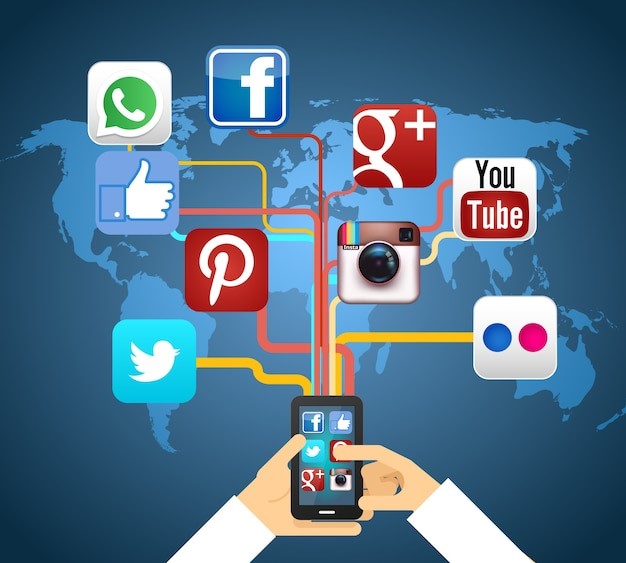Introduction
Staying updated with best digital marketing trends is crucial for businesses trying to navigate today’s fast-paced digital landscape. With changing their behavior constantly, it’s vital to adapt marketing strategies to meet their evolving needs. This year, we’ll explore five key trends that can help businesses enhance their marketing efforts and connect more effectively with their audiences.

1. Increased Focus on Customer Experience
1.1 Personalization of Marketing Efforts
Personalization/Customization has become a cornerstone of effective marketing, and it is one of the pillars in digital marketing trends in this year. Tailored messaging and content that resonate with individual preferences can significantly improve customer engagement. Tools such as platforms that offer dynamic content personalization allow marketers to send unique messages based on user behavior. For instance, brands like Amazon and Netflix excel in delivering personalized recommendations, leading to higher customer satisfaction and loyalty.
1.2 Multi-channel Marketing Approaches
Multichannel marketing refers to delivering a seamless experience across various digital platforms. It allows marketers to reach consumers wherever they are, which increases engagement. For example, a cohesive strategy might include email marketing, social media engagement, and in-app notifications. Tracking the performance of each channel can highlight the effectiveness of your efforts and inform future strategies.
1.3 Enhanced Customer Feedback Mechanisms
Customer feedback is essential for enhancing the overall customer experience. To collect valuable insights, businesses can use surveys, reviews, and social listening tools. By analyzing this feedback, companies can implement changes tailored to customer needs. An example is Starbucks, which frequently uses customer suggestions to adapt its menu and services, thus showing that listening leads to improvement.

2. Rise of Video Content
2.1 Popularity of Short-Form Video
Short-form videos have taken the spotlight, in digital era and it makes present and future goals in digital marketing trends to go viral to share videos in a family and friends are to put in a status can reach lot of people particularly on platforms like TikTok and Instagram Reels. They are easy to consume and can quickly capture attention. To create engaging short videos, brands should focus on storytelling, visuals, and trends. An example of this is how Duolingo uses humor in their short clips to make language learning appealing.
2.2 Live Streaming as a Marketing Tool
Live streaming offers a unique opportunity for real-time engagement with audiences. It allows brands to connect instantly and authentically. Successful examples include brands like Nike, which often uses live streaming for product launches and events to keep their audience engaged. Ensuring good lighting and sound can enhance the technical quality of live streams, making them more enjoyable for viewers.
2.3 Interactive Video Content
Interactive videos can significantly boost viewer engagement. Formats like clickable testimonials or choose-your-own-adventure stories invite the audience to participate actively. Brands can track how users interact with these videos, leading to insights that help refine marketing strategies further. Using platforms that offer interactive video capabilities can provide an avenue for creative storytelling.

3. The Evolution of Social Media Marketing
3.1 Growth of Social Commerce
Social commerce has seen substantial growth in this modern era grabbing all the eyes with digital marketing trends are turning into platforms like Instagram and Facebook into shopping hubs. Understanding how to leverage these platforms can turn social interactions into sales. Best practices include ensuring that product tags are visible and creating engaging content that encourages users to shop directly through social media.
3.2 The Role of User-Generated Content
User-generated content (UGC) builds community and authenticity around a brand. Encouraging customers to share their experiences can enhance engagement and trust. Effective strategies could include creating branded hashtags or hosting contests that showcase user content. For instance, GoPro regularly highlights adventure videos made by users, cultivating a loyal community while promoting their products.
3.3 Influencer Marketing Diversification
The influencer marketing landscape is evolving, with shifts toward micro and nano influencers who can connect more authentically with niche audiences. Establishing genuine partnerships with these influencers can drive better results than traditional methods. It’s more about finding the right voice that aligns with your values rather than sheer numbers of followers.

4. Emphasis on Data Privacy and Ethics
4.1 Changes in Data Privacy Regulations
With new data privacy laws emerging, it’s crucial for marketers to stay informed about compliance requirements. Understanding regulations like GDPR can help ensure your marketing strategies align with legal standards. Incorporating privacy-by-design principles in your processes can ease concerns about data usage.
4.2 Building Consumer Trust through Transparency
Being transparent about marketing practices strengthens consumer trust. Communicating privacy measures and data handling processes can go a long way. For instance, brands can issue regular updates on their commitment to data security, reinforcing their reliability in the eyes of consumers.
4.3 Ethical Considerations in Targeting and Advertising
Ethical marketing practices are becoming increasingly significant as consumers grow more aware of targeting tactics. Implementing two-way communication can clarify how and why targeting happens, alleviating concerns. Brands that prioritize ethics in their advertising strategies often enjoy better customer loyalty and reputation.

5. Adoption of Artificial Intelligence and Automation
5.1 AI-Powered Analytics and Insights
Digital Marketing trends Utilizing AI for data analysis offers numerous advantages, including better accuracy and efficiency. There are various tools available that can help marketers gain insights from their data. Interpreting AI insights effectively can lead to tailored strategies and optimized campaigns. For example, tools like Google Analytics leverage AI to provide deeper insights.
5.2 Automation of Marketing Tasks
Automating repetitive marketing tasks can save time and resources. Activities like email marketing and social media posting are often ripe for automation. However, it’s important to choose the right tools to avoid losing the personal touch. Finding a balance is crucial for maintaining audience engagement.
5.3 Chatbots and Customer Interaction
Chatbots have risen in popularity within customer service, providing immediate assistance to users. They enhance customer engagement by offering prompt responses to inquiries. Best practices for implementing chatbots include ensuring they are user-friendly and capable of handling common questions efficiently.

Conclusion
This year’s digital marketing trends and landscape is evolving with increased focus on customer experience, the rise of video content, and an evolving social media marketing strategy. By adapting to these trends, businesses can enhance their marketing approaches and stay relevant. Embrace these developments to thrive in the future of digital marketing!
FAQs
What are the most important trends in digital marketing this year?
The key trends include increased focus on customer experience, rise of video content, evolution of social media marketing, emphasis on data privacy and ethics, and adoption of AI and automation.
How can businesses effectively implement these trends?
Businesses can implement these trends by investing in the right tools, staying informed about changes in technology, and continuously gathering and analyzing customer feedback.
Are there specific tools recommended for each of these trends?
Yes, various tools exist for each trend, such as personalized marketing platforms for personalization, social media management tools for social commerce, and analytics software for leveraging AI.
What challenges might businesses face while adapting to these trends?
Challenges may include staying compliant with data regulations, ensuring the quality of content created, and selecting the right technology to support automation.
How can small businesses benefit from these digital marketing trends?
Small businesses can leverage these trends by engaging closely with their communities, utilizing cost-effective tools, and focusing on genuine relationships with customers to enhance brand loyalty.
